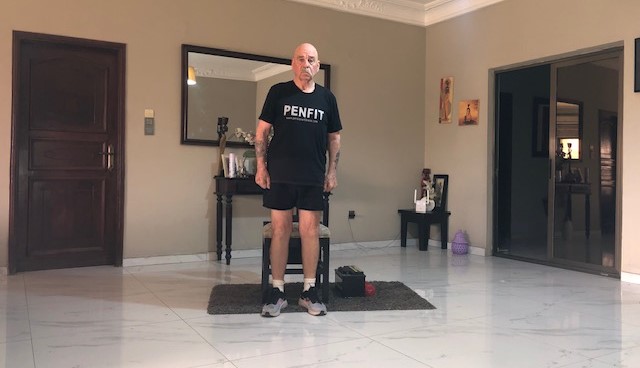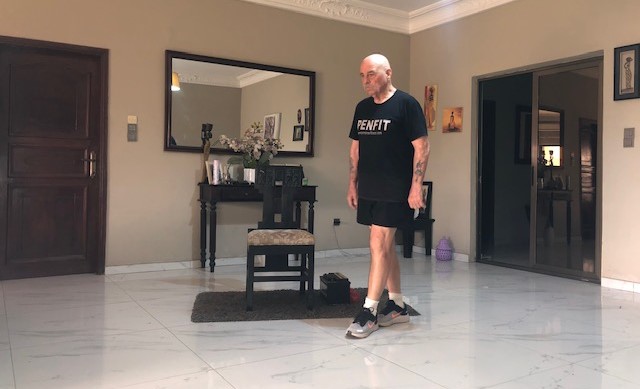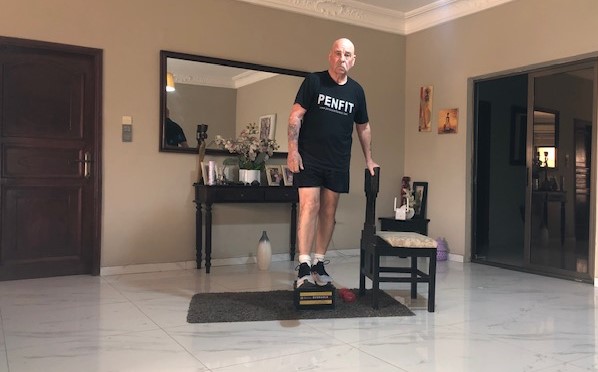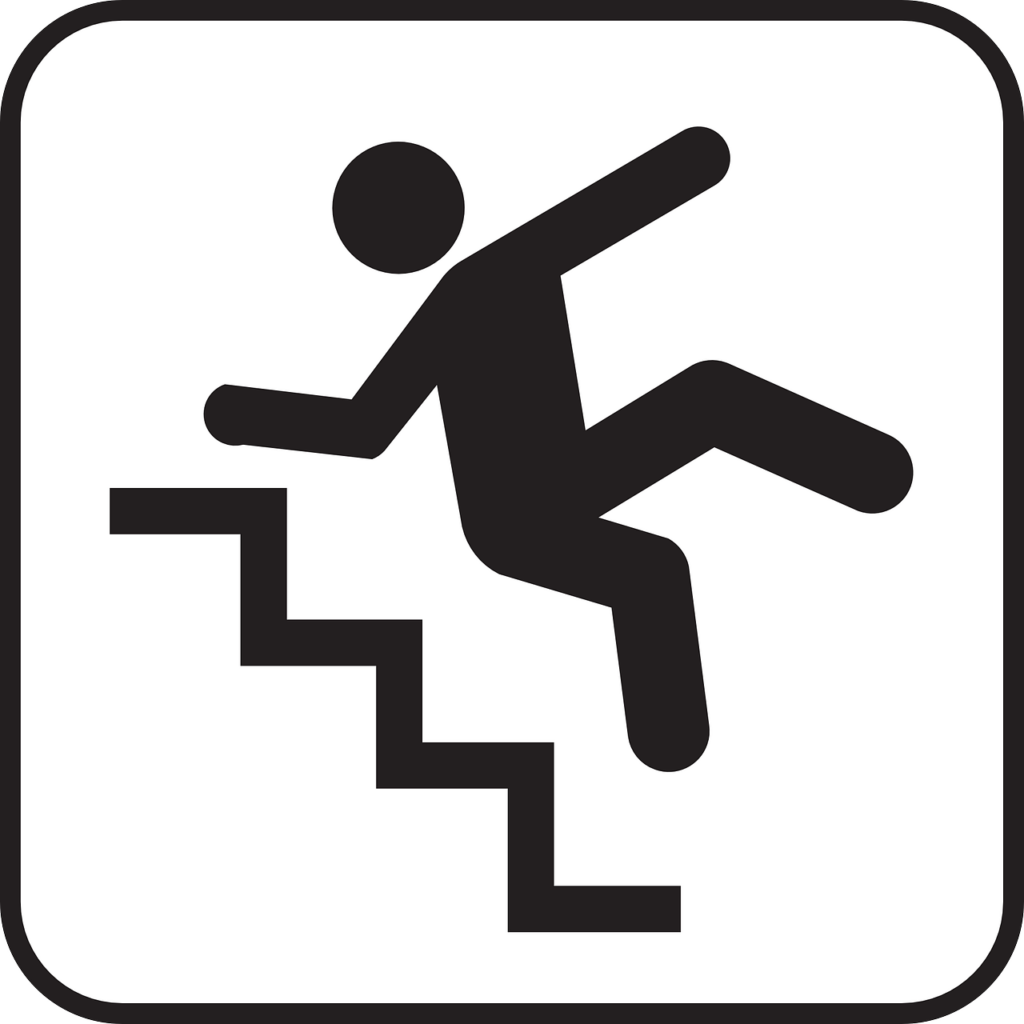Fall-Related Deaths in Older Adults
Fall Prevention Exercises. The number of fall-related deaths of older adults has risen at an alarming rate over the last 20 years. In this case, a considerable number of these deaths are preventable. So then, prevention through exercises for stretching, strength, balance and knowledge of the causes are key to prevention.
Fall Prevention, Contributing Factors to Falls
a. Impaired Vision
Fall Prevention Exercises. Age-related eye diseases make it difficult, if not impossible, to detect fall hazards, such as steps, puddles and thresholds. Even if a senior is in top physical condition. But failing to see and accurately perceive obstacles or changes in ground level can lead to a nasty tumble. Refusing to follow physician recommendations for treatment, including wearing eyeglasses and using necessary low-vision equipment can contribute to falls as well.
b. Medication Side Effects
Fall Prevention Exercises. A wide variety of medications increase a senior’s fall risk. Side effects, such as drowsiness, dizziness and low blood pressure, can all contribute to an accident. Sedatives, antidepressants, antipsychotics, opioids and some cardiovascular drugs are the most common culprits. A study of polypharmacy in older adults found that 39 per cent of this age group takes five or more prescription medications. Polypharmacy increases the risk of adverse drug reactions and drug-related falls. Keep in mind that over-the-counter medications and dietary supplements can have powerful side effects and synergistic effects, too.
c. Chronic Diseases
Fall Prevention Exercises. Health conditions like Parkinson’s disease, Alzheimer’s disease and arthritis that affect balance, physical strength, joint integrity and/or cognitive function contribute to falls. Poor physical health increases a person’s initial risk of falling and minimizes their ability to respond to hazards and recover from accidents, like tripping or slipping. Peripheral neuropathy, or nerve damage, can cause numbness in the feet, making it very difficult for a senior to sense environmental hazards and get around safely.
d. Surgical Procedures
Fall Prevention Exercises. Hip replacements and other surgeries can leave an elderly person weak, in pain and discomfort, and less mobile than they were before the procedure. This might be temporary while a patient heals or become a new and lasting problem. Senior rehabilitation is crucial for helping older adults recuperate quickly and recover as much of their physical, cognitive and functional ability as possible.
e. Behavioural Hazards
Fall Prevention Exercises. A person’s fall risk is also influenced by their unique lifestyle and behaviours. This includes the types of activities they engage in, the level of physical demand these activities require, and their willingness and ability to adapt their routine for enhanced safety. For example, laundry is a normal daily activity for many people, but it can involve a great deal of exertion for a senior, especially if they must carry a heavy laundry basket throughout their home. This can be risky on its own, but if they also refuse to wear secure, non-skid footwear or attempt to navigate stairs with the basket, they put themselves at greater risk. Failing to modify behaviours to account for new or increasing difficulties is a serious, yet common, contributing factor for falls in older individuals.
f. Environmental Hazards
Fall Prevention Exercises. The majority of falls occur in or around seniors’ homes. One serious cause is stepping down. Environmental factors, such as poor lighting, clutter, areas of disrepair, loose carpets, slick floors and lack of safety equipment (e.g., grab bars, ramps, lifts), can jeopardize a senior’s safety. In many cases, unsafe living conditions ultimately lead to accidents and falls that prevent older adults from the ability to age in place.
Declines in Physical Fitness

Fall Prevention Exercises. Many adults become less active as they get older, which exacerbates the physical effects of ageing. Failure to engage in even mild exercise on a regular basis results in reduced muscle mass and strength (sarcopenia), decreased bone mass, poor balance and coordination, and reduced flexibility. Not only does overall deconditioning increase a senior’s risk of falling, but it also increases the likelihood that they will incur a serious injury and experience a longer, more difficult recovery.
Exercises to Prevent Falls
While it’s not possible to completely prevent a fall, exercises that focus on balance and strength training can reduce the risk of falling. “So then, elderly adults risk injuries sustained from falls. Also many feel unsteady while walking or standing and are fearful of falling.” However, these exercises can help improve balance and build strength to help prevent future falls.”
For older adults, activities such as squatting, standing up from a chair and walking may be difficult. And may cause them to feel unsteady, which increases their risk of falling. The following exercises are intended for those who have a low risk of falls and are able to stand on their own without support from others. Always talk to your doctor or physical therapist first before starting new exercises, especially if you have a weak balance.
1. Sit to Stand

The sit-to-stand exercise builds leg strength and improves body mechanics and balance, which are all important in reducing falls.
How to do it
1. Start by sitting on a sturdy chair of standard height, and make sure that it won’t slide or roll. You should be able to sit comfortably with your feet flat on the ground. Have a sturdy support surface in front of you, such as a countertop, or another chair. Here, you can reach it for support if you start to feel unsteady when standing. Scoot forward so your buttocks are positioned at the front of the seat.
2. Lean your chest forward over your toes, shifting your body weight forward. Squeeze your gluteal muscles and slowly rise to a stable standing position.
3. Slowly hinge and sit back down to the starting position and repeat 10 times.
4. If necessary, place your hands on the arms or seat of the chair and push through your hands to help stand and sit. The goal is to not use your hands at all.
Perform 10 repetitions, three a day. For an advanced version, hold hand weights to add resistance.
If you have pain in your knees, back or hips, discontinue and talk to your doctor or physical therapist.
Walking To prevent Falls
Falls in older people continue to be a major public health issue in industrialized countries.

Extensive research into fall prevention has identified exercise as a proven fall prevention strategy. However, despite over a decade of promoting physical activity, hospitalisation rates due to fall injuries in older people are still increasing. This could be because efforts to increase physical activity amongst older people have been unsuccessful, or the physical activity that older people engage in is insufficient and/or inappropriate.
The majority of older people choose walking as their predominant form of exercise. While walking has been shown to lower the risk of many chronic diseases its role in fall prevention remains unclear. However, it should be noted that fear of falling creates smaller steps, which encourages the toe to point down. Increasing the fall risk from tripping
One study found that by walking 30 minutes daily, seniors could reduce the risk of hip fracture by 40%. Climbing stairs, which is more intensive than walking, has even more significant benefits. In addition, climbing stairs has the ability to build leg strength, creating better stability and therefore reducing the risk of falling.
How to do it
- Walk with confidence, and ensure your toe is not down as your foot goes forward.
- Your heel should strike the ground first for each step.
- This reduces the chances of tripping on uneven surfaces
- This should be practised slowly until it comes naturally.
Heel to toe Walking
Heel-to-toe, tightrope walking in a straight line will help develop balance and coordination. Both will help to prevent falls

How to do it
- Choose a straight line to walk along, use tile lines or lat tape down as a guide.
- Walk the line placing your heel at the toe of each step
- Use your arms to help your balance as you move forward
- Try to walk for 10 metres if space permits, or turn and repeat to reach around 10 metres.
Conditions like osteoporosis affect older adults the most. So then, bone and muscle loss are some of the biggest problems for older adults. Consequently, the loss of muscle reduces your strength and further makes you susceptible to bone loss. And weakened bones increase the risk of bone fractures, which is why seniors are more susceptible to hip fractures.
Stepping Down causes many serious falls
If you’re an older person, falling is something you want to avoid at all costs. In fact, according to the National Council on Ageing, falls are the leading cause of both fatal and nonfatal injuries among older people. Once a fall occurs, it can become more likely to happen again, leading to declines in function and independence. A leading cause of falls is the act of stepping down, here we will look at how to prevent falls from stepping down.

How to do it
- Use the handrail for stability when you can
- Shift your weight onto one leg
- Raise the other leg slightly and position it to step down
- Bend the knee of the support leg so it slowly lowers you
- The foot that is stepping down will lower until it is safely down
- You can now walk away
Video
In Conclusion
The key to fall prevention is Exercise and balance and an understanding of why falls occur. It is easy to not exercise and use excuses like I am too old. But the reality is you are never too old to improve through exercise. And with an understanding and knowledge of the causes of falls, you can reduce your risk and stay safe.
Important Note *
Remember that everyone is different, it is ultimately YOUR RESPONSIBILITY to find what your body responds to. So please do your due diligence before trying anything new, including getting Medical Advice to ensure your safety and peace of mind.
Connect with me and leave a comment or two on my social media.

6 replies on “Fall Prevention Exercises”
Hello Ian
I was reading that walking barefoot will strengthen feet and help with balance.
Hi Gillian, Yes you are correct, walking barefoot is very good for foot strength and stability, spending time walking barefoot is not always possible outside, but in the home we can walk barefoot for as long as we choose. Thanks for your comment. All the best Ian
Thanks Ian, keep up the good work!
Hi Gillian.Thank you for your kind words, Regards Ian
Hi Gillian, Yes you are correct, walking barefoot is very good for foot strength and stability, Thanks for your comment. I have answered this as you made 2 comments. All the best Ian
I read that walking barefoot will increase foot strength and stability.